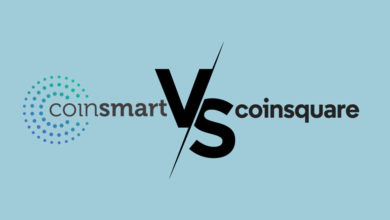5 Blockchain Protocols You Need To Know in 2024
With Bitcoin on the verge of reaching a new all-time high of $70,000 in 2024 and following the recent approval of Bitcoin applications and innovations, understanding the infrastructure behind this cryptocurrency has become crucial. Blockchain protocols are the backbone algorithms designed with distinct features to meet specific needs, thereby managing and regulating blockchain networks. These protocols ensure the secure and decentralized execution of crypto transactions. This Cryptomaniaks article examines five critical blockchain protocols that have significantly impacted the blockchain landscape, highlighting their unique characteristics and use cases.
Essential Concepts of Blockchain Protocol Technology
Before discussing the protocols backing crypto transactions, let’s discuss some terminologies you need to know to become a crypto professional. Understanding the essential concepts of blockchain is crucial for grasping its potential and implications across different sectors.
Decentralization: The concept of decentralization is at the core of blockchain technology. Unlike traditional centralized systems, where data is stored and controlled by a single entity, blockchain operates on a network of nodes containing a copy of the entire ledger. This decentralized structure ensures no single point of failure, enhancing security and resilience.
Immutable Ledger: The blockchain ledger is immutable, meaning it does not undergo alterations once data is recorded. Each block contains a cryptographic hash of the previous block, creating a chain of linked blocks. This feature ensures the integrity and trustworthiness of the data, making blockchain ideal for applications requiring tamper-proof records.
Smart Contracts: Smart contracts are self-executing contracts with the terms of the agreement directly written into code. They automatically enforce and execute the contract terms when users meet predefined conditions, eliminating the need for intermediaries and streamlining processes. Smart contracts enable various applications, including supply chain management, financial services, and decentralized applications (DApps).
Cryptographic Security: Blockchain technology employs cryptographic techniques to ensure the security and privacy of data. Public-private key pairs are used to authenticate users and secure transactions, while cryptographic hash functions ensure data integrity on the blockchain. These security measures protect against unauthorized access, fraud, and tampering.
5 Blockchain Protocols You Need to Know
Blockchain technology has fundamentally transformed how we perceive digital trust, security, and decentralization. Its protocols are critical to understanding the potential and applications of blockchain across various sectors. Here are five essential blockchain protocols you need to know, each representing a unique approach to solving specific problems within the digital world.
1. Bitcoin Protocol
The Bitcoin Protocol is the pioneering blockchain technology that introduced the concept of a decentralized digital currency. The system supporting its transactions is the proof-of-work (PoW) consensus mechanism, where traders engage in rigorous processes to validate transactions and create new blocks. This process ensures the security and integrity of the network, making it virtually impossible to alter historical data.
The Bitcoin Protocol’s primary focus is on peer-to-peer transactions without intermediaries, offering users a high level of security and anonymity. Despite its groundbreaking impact, the Bitcoin network faces challenges, including scalability issues and high energy consumption due to its PoW mechanism. However, it remains the most widely recognized and adopted cryptocurrency, bench-marking other digital currencies and blockchain technologies.
2. Ethereum Protocol
Launched in 2015, Ethereum creators unveiled smart contracts—independent contracts with the terms of the agreement directly written into code. This feature extends blockchain utility beyond financial transactions, enabling decentralized applications (DApps) on its platform. Ethereum use to operate on a similar PoW mechanism to Bitcoin but has transitioned to a proof-of-stake (PoS) consensus with its Ethereum 2.0 upgrade to address scalability and energy consumption concerns.
Ethereum’s flexibility and support for smart contracts have made it a popular platform for developers, leading to a vibrant ecosystem of DApps, decentralized finance (DeFi) applications, and non-fungible tokens (NFTs). Despite facing challenges such as network congestion and high transaction fees, it has positioned itself as a crucial platform for blockchain innovation.
3. Ripple Protocol (XRP Ledger)
The Ripple Protocol, or XRP Ledger, is designed for fast and efficient cross-border payments, aiming to facilitate instant, low-cost international transactions. Unlike Bitcoin and Ethereum, Ripple does not rely on a traditional blockchain but uses a distributed consensus ledger employing a network of validating servers and a unique consensus mechanism. This setup allows for faster transaction processing and scalability, making it an attractive option for banks and financial institutions looking to modernize their payment systems.
Ripple’s consensus mechanism does not require mining, significantly reducing energy consumption and transaction costs. However, its more centralized approach and the company’s legal battles have sparked debates about decentralization and regulatory compliance.
4. Cardano Protocol
Cardano is a third-generation blockchain platform that addresses the scalability, interoperability, and sustainability issues that earlier blockchain protocols like Bitcoin and Ethereum face. It employs a unique PoS consensus mechanism called Ouroboros, designed to provide high security and energy efficiency levels. Cardano also emphasizes a research-driven approach, with its development grounded in academic research and peer-reviewed studies.
Cardano supports smart contracts and DApps, offering developers a more scalable and environmentally friendly alternative. Its layered architecture separates the settlement and computational layers, enabling more flexible and efficient transaction and intelligent contract processing.
5. Polkadot Protocol
Polkadot is a multi-chain blockchain protocol that enables blockchains to transfer messages and value trust-free, sharing their unique features while pooling their security. Its designs facilitate interoperability and scalability for blockchains, allowing them to connect and operate seamlessly. Polkadot’s architecture consists of a main relay chain with available transactions and records and several parachains that can have their tokens and optimize functionality for specific use cases.
Furthermore, it employs a nominated proof-of-stake (NPoS) mechanism, encouraging users to participate in the network’s security and consensus processes. Its innovative structure aims to create a decentralized web where independent blockchains can share information. Additionally, it builds an avenue for independent transactions, a scene where the need for centralized services is eradicated.




